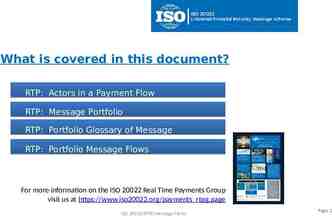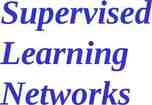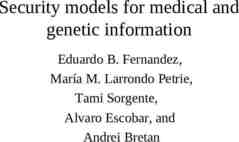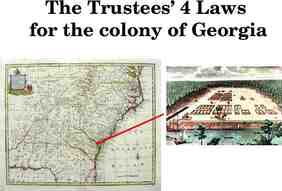Chapter 6 Methods Liang, Introduction to Java Programming, Eleventh
74 Slides1,003.50 KB

Chapter 6 Methods Liang, Introduction to Java Programming, Eleventh Edition, (c) 2017 Pearson Education, Inc. All rights reserved. 1

Opening Problem Find the sum of integers from 1 to 10, from 20 to 30, and from 35 to 45, respectively. Liang, Introduction to Java Programming, Eleventh Edition, (c) 2017 Pearson Education, Inc. All rights reserved. 2

Problem int sum 0; for (int i 1; i 10; i ) sum i; System.out.println("Sum from 1 to 10 is " sum); sum 0; for (int i 20; i 30; i ) sum i; System.out.println("Sum from 20 to 30 is " sum); sum 0; for (int i 35; i 45; i ) sum i; System.out.println("Sum from 35 to 45 is " sum); Liang, Introduction to Java Programming, Eleventh Edition, (c) 2017 Pearson Education, Inc. All rights reserved. 3

Problem int sum 0; for (int i 1; i 10; i ) sum i; System.out.println("Sum from 1 to 10 is " sum); sum 0; for (int i 20; i 30; i ) sum i; System.out.println("Sum from 20 to 30 is " sum); sum 0; for (int i 35; i 45; i ) sum i; System.out.println("Sum from 35 to 45 is " sum); Liang, Introduction to Java Programming, Eleventh Edition, (c) 2017 Pearson Education, Inc. All rights reserved. 4

Solution public static int sum(int i1, int i2) { int sum 0; for (int i i1; i i2; i ) sum i; return sum; } MethodDemo Run public static void main(String[] args) { System.out.println("Sum from 1 to 10 is " sum(1, 10)); System.out.println("Sum from 20 to 30 is " sum(20, 30)); System.out.println("Sum from 35 to 45 is " sum(35, 45)); } Liang, Introduction to Java Programming, Eleventh Edition, (c) 2017 Pearson Education, Inc. All rights reserved. 5

Objectives To define methods with formal parameters (§6.2). To invoke methods with actual parameters (i.e., arguments) (§6.2). To define methods with a return value (§6.3). To define methods without a return value (§6.4). To pass arguments by value (§6.5). To develop reusable code that is modular, easy to read, easy to debug, and easy to maintain (§6.6). To write a method that converts hexadecimals to decimals (§6.7). To use method overloading and understand ambiguous overloading (§6.8). To determine the scope of variables (§6.9). To apply the concept of method abstraction in software development (§6.10). To design and implement methods using stepwise refinement (§6.10). Liang, Introduction to Java Programming, Eleventh Edition, (c) 2017 Pearson Education, Inc. All rights reserved. 6

Classwork Write a method name myMethod() that will print message "My first method"; Call the myMethod from the main https://github.com/shivasharma/IS147/blob/m aster/src/Week7/MultiMethod.java Liang, Introduction to Java Programming, Eleventh Edition, (c) 2017 Pearson Education, Inc. All rights reserved. 7

Defining Methods A method is a collection of statements that are grouped together to perform an operation. Define a method Invoke a method int z max(x, y); public static int max(int num1, int num2) { int result; actual parameters (arguments) if (num1 num2) result num1; else result num2; } return result; Liang, Introduction to Java Programming, Eleventh Edition, (c) 2017 Pearson Education, Inc. All rights reserved. 8

Defining Methods Creation of reusable code block Define a method modifier method header return value type Invoke a method method name formal parameters int z max(x, y); public static int max(int num1, int num2) { actual parameters (arguments) int result; method body if (num1 num2) result num1; else result num2; } return result; parameter list method signature return value Liang, Introduction to Java Programming, Eleventh Edition, (c) 2017 Pearson Education, Inc. All rights reserved. 9

Method Signature Method signature is the combination of the method name and the parameter list. https://github.com/shivasharma/IS147/blob/master/src/Week7/ ReturnValueFromMethod.java Define a method modifier method header return value type Invoke a method method name formal parameters int z max(x, y); public static int max(int num1, int num2) { actual parameters (arguments) int result; method body if (num1 num2) result num1; else result num2; } return result; parameter list method signature return value Liang, Introduction to Java Programming, Eleventh Edition, (c) 2017 Pearson Education, Inc. All rights reserved. 10

Formal Parameters The variables defined in the method header are known as formal parameters. Define a method modifier method header return value type Invoke a method method name formal parameters int z max(x, y); public static int max(int num1, int num2) { actual parameters (arguments) int result; method body if (num1 num2) result num1; else result num2; } return result; parameter list method signature return value Liang, Introduction to Java Programming, Eleventh Edition, (c) 2017 Pearson Education, Inc. All rights reserved. 11

Actual Parameters When a method is invoked, you pass a value to the parameter. This value is referred to as actual parameter or argument. Define a method modifier method header return value type Invoke a method method name formal parameters int z max(x, y); public static int max(int num1, int num2) { actual parameters (arguments) int result; method body if (num1 num2) result num1; else result num2; } return result; parameter list method signature return value Liang, Introduction to Java Programming, Eleventh Edition, (c) 2017 Pearson Education, Inc. All rights reserved. 12

Return Value Type A method may return a value. The returnValueType is the data type of the value the method returns. If the method does not return a value, the returnValueType is the keyword void. For example, the returnValueType in the main method is void. Define a method modifier method header return value type Invoke a method method name formal parameters int z max(x, y); public static int max(int num1, int num2) { actual parameters (arguments) int result; method body if (num1 num2) result num1; else result num2; } return result; parameter list method signature return value Liang, Introduction to Java Programming, Eleventh Edition, (c) 2017 Pearson Education, Inc. All rights reserved. 13

Classwork Write a method name Addition() with a correct return type It will take two int parameters and return the sum of the numbers Call the Addition from the main https://github.com/shivasharma/IS147/blob/master/ src/Week7/ReturnValueFromMethod.java Liang, Introduction to Java Programming, Eleventh Edition, (c) 2017 Pearson Education, Inc. All rights reserved. 14

VISIBILITY VISIBILITY “modifiers” help reinforce encapsulation ideas by restricting a client’s ability to access an object. FINAL is used to create an unchangeable variable like a Constant. PRIVATE restricts access to an object to the members of the object’s class. PRIVATE METHODS are known as SUPPORT Methods. PUBLIC visibility allows the object to be referenced anywhere. PUBLIC METHODS are known as SERVICE Methods PROTECTED- visibility by classes only in the same package https://github.com/shivasharma/IS147/blob/master/src/Week7/Visibility Liang, Introduction to Java Programming, Eleventh Edition, (c) 2017 Pearson Education, Inc. All rights reserved.

Calling Visibility Methods Testing the max method This program demonstrates calling a method max to return the largest of the int values TestMax Run Liang, Introduction to Java Programming, Eleventh Edition, (c) 2017 Pearson Education, Inc. All rights reserved. 16

animation Calling Methods, cont. pass the value of i public static void main(String[] args) { int i 5; int j 2; int k max(i, j); } pass the value of j public static int max(int num1, int num2) { int result; if (num1 num2) result num1; else result num2; System.out.println( "The maximum between " i " and " j " is " k); } return result; Liang, Introduction to Java Programming, Eleventh Edition, (c) 2017 Pearson Education, Inc. All rights reserved. 17

animation Trace Method Invocation i is now 5 public static void main(String[] args) { int i 5; int j 2; int k max(i, j); } public static int max(int num1, int num2) { int result; if (num1 num2) result num1; else result num2; System.out.println( "The maximum between " i " and " j " is " k); } return result; Liang, Introduction to Java Programming, Eleventh Edition, (c) 2017 Pearson Education, Inc. All rights reserved. 18

animation Trace Method Invocation j is now 2 public static void main(String[] args) { int i 5; int j 2; int k max(i, j); } public static int max(int num1, int num2) { int result; if (num1 num2) result num1; else result num2; System.out.println( "The maximum between " i " and " j " is " k); } return result; Liang, Introduction to Java Programming, Eleventh Edition, (c) 2017 Pearson Education, Inc. All rights reserved. 19

animation Trace Method Invocation invoke max(i, j) public static void main(String[] args) { int i 5; int j 2; int k max(i, j); } public static int max(int num1, int num2) { int result; if (num1 num2) result num1; else result num2; System.out.println( "The maximum between " i " and " j " is " k); } return result; Liang, Introduction to Java Programming, Eleventh Edition, (c) 2017 Pearson Education, Inc. All rights reserved. 20

animation Trace Method Invocation invoke max(i, j) Pass the value of i to num1 Pass the value of j to num2 public static void main(String[] args) { int i 5; int j 2; int k max(i, j); } public static int max(int num1, int num2) { int result; if (num1 num2) result num1; else result num2; System.out.println( "The maximum between " i " and " j " is " k); } return result; Liang, Introduction to Java Programming, Eleventh Edition, (c) 2017 Pearson Education, Inc. All rights reserved. 21

animation Trace Method Invocation declare variable result public static void main(String[] args) { int i 5; int j 2; int k max(i, j); } public static int max(int num1, int num2) { int result; if (num1 num2) result num1; else result num2; System.out.println( "The maximum between " i " and " j " is " k); } return result; Liang, Introduction to Java Programming, Eleventh Edition, (c) 2017 Pearson Education, Inc. All rights reserved. 22

animation Trace Method Invocation (num1 num2) is true since num1 is 5 and num2 is 2 public static void main(String[] args) { int i 5; int j 2; int k max(i, j); } public static int max(int num1, int num2) { int result; if (num1 num2) result num1; else result num2; System.out.println( "The maximum between " i " and " j " is " k); } return result; Liang, Introduction to Java Programming, Eleventh Edition, (c) 2017 Pearson Education, Inc. All rights reserved. 23

animation Trace Method Invocation result is now 5 public static void main(String[] args) { int i 5; int j 2; int k max(i, j); } public static int max(int num1, int num2) { int result; if (num1 num2) result num1; else result num2; System.out.println( "The maximum between " i " and " j " is " k); } return result; Liang, Introduction to Java Programming, Eleventh Edition, (c) 2017 Pearson Education, Inc. All rights reserved. 24

animation Trace Method Invocation return result, which is 5 public static void main(String[] args) { int i 5; int j 2; int k max(i, j); } public static int max(int num1, int num2) { int result; if (num1 num2) result num1; else result num2; System.out.println( "The maximum between " i " and " j " is " k); } return result; Liang, Introduction to Java Programming, Eleventh Edition, (c) 2017 Pearson Education, Inc. All rights reserved. 25

animation Trace Method Invocation return max(i, j) and assign the return value to k public static void main(String[] args) { int i 5; int j 2; int k max(i, j); } public static int max(int num1, int num2) { int result; if (num1 num2) result num1; else result num2; System.out.println( "The maximum between " i " and " j " is " k); } return result; Liang, Introduction to Java Programming, Eleventh Edition, (c) 2017 Pearson Education, Inc. All rights reserved. 26

animation Trace Method Invocation Execute the print statement public static void main(String[] args) { int i 5; int j 2; int k max(i, j); } public static int max(int num1, int num2) { int result; if (num1 num2) result num1; else result num2; System.out.println( "The maximum between " i " and " j " is " k); } return result; Liang, Introduction to Java Programming, Eleventh Edition, (c) 2017 Pearson Education, Inc. All rights reserved. 27

CAUTION A return statement is required for a value-returning method. The method shown below in (a) is logically correct, but it has a compilation error because the Java compiler thinks it possible that this method does not return any value. public static int sign(int n) { if (n 0) return 1; else if (n 0) return 0; else if (n 0) return –1; } (a) Should be public static int sign(int n) { if (n 0) return 1; else if (n 0) return 0; else return –1; } (b) To fix this problem, delete if (n 0) in (a), so that the compiler will see a return statement to be reached regardless of how the if statement is evaluated. Liang, Introduction to Java Programming, Eleventh Edition, (c) 2017 Pearson Education, Inc. All rights reserved. 28

Reuse Methods from Other Classes NOTE: One of the benefits of methods is for reuse. The max method can be invoked from any class besides TestMax. If you create a new class Test, you can invoke the max method using ClassName.methodName (e.g., TestMax.max). Classwork Create a call name Test Define the method TestMax on the Test class That will find the max value of Call the method from the Main . https://github.com/shivasharma/IS147/blob/master/src/Week7 /ReturnValueFromMethod.java Liang, Introduction to Java Programming, Eleventh Edition, (c) 2017 Pearson Education, Inc. All rights reserved. 29

Call Stacks Liang, Introduction to Java Programming, Eleventh Edition, (c) 2017 Pearson Education, Inc. All rights reserved. 30

animation Trace Call Stack i is declared and initialized public static void main(String[] args) { int i 5; int j 2; int k max(i, j); } System.out.println( "The maximum between " i " and " j " is " k); public static int max(int num1, int num2) { int result; if (num1 num2) result num1; else result num2; } i: 5 The main method is invoked. return result; Liang, Introduction to Java Programming, Eleventh Edition, (c) 2017 Pearson Education, Inc. All rights reserved. 31

animation Trace Call Stack j is declared and initialized public static void main(String[] args) { int i 5; int j 2; int k max(i, j); } System.out.println( "The maximum between " i " and " j " is " k); public static int max(int num1, int num2) { int result; if (num1 num2) result num1; else result num2; } j: 2 i: 5 The main method is invoked. return result; Liang, Introduction to Java Programming, Eleventh Edition, (c) 2017 Pearson Education, Inc. All rights reserved. 32

animation Trace Call Stack Declare k public static void main(String[] args) { int i 5; int j 2; int k max(i, j); } System.out.println( "The maximum between " i " and " j " is " k); public static int max(int num1, int num2) { int result; if (num1 num2) result num1; else result num2; } Space required for the main method k: j: 2 i: 5 The main method is invoked. return result; Liang, Introduction to Java Programming, Eleventh Edition, (c) 2017 Pearson Education, Inc. All rights reserved. 33

animation Trace Call Stack Invoke max(i, j) public static void main(String[] args) { int i 5; int j 2; int k max(i, j); } System.out.println( "The maximum between " i " and " j " is " k); public static int max(int num1, int num2) { int result; if (num1 num2) result num1; else result num2; } Space required for the main method k: j: 2 i: 5 The main method is invoked. return result; Liang, Introduction to Java Programming, Eleventh Edition, (c) 2017 Pearson Education, Inc. All rights reserved. 34

animation Trace Call Stack pass the values of i and j to num1 and num2 public static void main(String[] args) { int i 5; int j 2; int k max(i, j); } System.out.println( "The maximum between " i " and " j " is " k); public static int max(int num1, int num2) { int result; if (num1 num2) result num1; else result num2; } return result; num2: 2 num1: 5 Space required for the main method k: j: 2 i: 5 The max method is invoked. Liang, Introduction to Java Programming, Eleventh Edition, (c) 2017 Pearson Education, Inc. All rights reserved. 35

animation Trace Call Stack Declare result public static void main(String[] args) { int i 5; int j 2; int k max(i, j); } System.out.println( "The maximum between " i " and " j " is " k); public static int max(int num1, int num2) { int result; if (num1 num2) result num1; else result num2; } return result; result: num2: 2 num1: 5 Space required for the main method k: j: 2 i: 5 The max method is invoked. Liang, Introduction to Java Programming, Eleventh Edition, (c) 2017 Pearson Education, Inc. All rights reserved. 36

animation Trace Call Stack (num1 num2) is true public static void main(String[] args) { int i 5; int j 2; int k max(i, j); } System.out.println( "The maximum between " i " and " j " is " k); public static int max(int num1, int num2) { int result; if (num1 num2) result num1; else result num2; } return result; result: num2: 2 num1: 5 Space required for the main method k: j: 2 i: 5 The max method is invoked. Liang, Introduction to Java Programming, Eleventh Edition, (c) 2017 Pearson Education, Inc. All rights reserved. 37

animation Trace Call Stack Assign num1 to result public static void main(String[] args) { int i 5; int j 2; int k max(i, j); } System.out.println( "The maximum between " i " and " j " is " k); public static int max(int num1, int num2) { int result; if (num1 num2) result num1; else result num2; } return result; Space required for the max method result: 5 num2: 2 num1: 5 Space required for the main method k: j: 2 i: 5 The max method is invoked. Liang, Introduction to Java Programming, Eleventh Edition, (c) 2017 Pearson Education, Inc. All rights reserved. 38

animation Trace Call Stack Return result and assign it to k public static void main(String[] args) { int i 5; int j 2; int k max(i, j); } System.out.println( "The maximum between " i " and " j " is " k); public static int max(int num1, int num2) { int result; if (num1 num2) result num1; else result num2; } return result; Space required for the max method result: 5 num2: 2 num1: 5 Space required for the main method k:5 j: 2 i: 5 The max method is invoked. Liang, Introduction to Java Programming, Eleventh Edition, (c) 2017 Pearson Education, Inc. All rights reserved. 39

animation Trace Call Stack Execute print statement public static void main(String[] args) { int i 5; int j 2; int k max(i, j); } System.out.println( "The maximum between " i " and " j " is " k); public static int max(int num1, int num2) { int result; if (num1 num2) result num1; else result num2; } Space required for the main method k:5 j: 2 i: 5 The main method is invoked. return result; Liang, Introduction to Java Programming, Eleventh Edition, (c) 2017 Pearson Education, Inc. All rights reserved. 40

void Method Example This type of method does not return a value. The method performs some actions. TestVoidMethod Run TestReturnGradeMethod Run Liang, Introduction to Java Programming, Eleventh Edition, (c) 2017 Pearson Education, Inc. All rights reserved. 41

Passing Parameters public static void nPrintln(String message, int n) { for (int i 0; i n; i ) System.out.println(message); } Suppose you invoke the method using nPrintln(“Welcome to Java”, 5); What is the output? Suppose you invoke the method using nPrintln(“Computer Science”, 15); What is the output? Can you invoke the method using nPrintln(15, “Computer Science”); Liang, Introduction to Java Programming, Eleventh Edition, (c) 2017 Pearson Education, Inc. All rights reserved. 42

Pass by Value This program demonstrates passing values to the methods. Increment Run Liang, Introduction to Java Programming, Eleventh Edition, (c) 2017 Pearson Education, Inc. All rights reserved. 43

Pass by Value Testing Pass by value This program demonstrates passing values to the methods. TestPassByValue Run Liang, Introduction to Java Programming, Eleventh Edition, (c) 2017 Pearson Education, Inc. All rights reserved. 44

Pass by Value, cont. Liang, Introduction to Java Programming, Eleventh Edition, (c) 2017 Pearson Education, Inc. All rights reserved. 45

Modularizing Code Methods can be used to reduce redundant coding and enable code reuse. Methods can also be used to modularize code and improve the quality of the program. GreatestCommonDivisorMethod Run PrimeNumberMethod Run Liang, Introduction to Java Programming, Eleventh Edition, (c) 2017 Pearson Education, Inc. All rights reserved. 46

Case Study: Converting Hexadecimals to Decimals Write a method that converts a hexadecimal number into a decimal number. ABCD A*16 3 B*16 2 C*16 1 D*16 0 ((A*16 B)*16 C)*16 D ((10*16 11)*16 12)*16 13 ? Hex2Dec Run Liang, Introduction to Java Programming, Eleventh Edition, (c) 2017 Pearson Education, Inc. All rights reserved. 47

Overloading Methods Overloading the max Method public static double max(double num1, double num2) { if (num1 num2) return num1; else return num2; } https://github.com/shivasharma/IS147/blob/master/ src/Week7/MethodOverload.java TestMethodOverloading Run Liang, Introduction to Java Programming, Eleventh Edition, (c) 2017 Pearson Education, Inc. All rights reserved. 48

Classwork Overloading the max Method With following return type int, double, float Liang, Introduction to Java Programming, Eleventh Edition, (c) 2017 Pearson Education, Inc. All rights reserved. 49

Ambiguous Invocation Sometimes there may be two or more possible matches for an invocation of a method, but the compiler cannot determine the most specific match. This is referred to as ambiguous invocation. Ambiguous invocation is a compile error. Liang, Introduction to Java Programming, Eleventh Edition, (c) 2017 Pearson Education, Inc. All rights reserved. 50

Classwork https://github.com/shivasharma/IS147/blob/ master/src/Week7/ AmbiguousOverloading.java Correct the above code Liang, Introduction to Java Programming, Eleventh Edition, (c) 2017 Pearson Education, Inc. All rights reserved. 51

Ambiguous Invocation public class AmbiguousOverloading { public static void main(String[] args) { System.out.println(max(1, 2)); } public static double max(int num1, double num2) { if (num1 num2) return num1; else return num2; } public static double max(double num1, int num2) { if (num1 num2) return num1; else return num2; } } Liang, Introduction to Java Programming, Eleventh Edition, (c) 2017 Pearson Education, Inc. All rights reserved. 52

Scope of Local Variables A local variable: a variable defined inside a method. Scope: the part of the program where the variable can be referenced. The scope of a local variable starts from its declaration and continues to the end of the block that contains the variable. A local variable must be declared before it can be used. Liang, Introduction to Java Programming, Eleventh Edition, (c) 2017 Pearson Education, Inc. All rights reserved. 53

Scope of Local Variables, cont. You can declare a local variable with the same name multiple times in different nonnesting blocks in a method, but you cannot declare a local variable twice in nested blocks. Liang, Introduction to Java Programming, Eleventh Edition, (c) 2017 Pearson Education, Inc. All rights reserved. 54

Scope of Local Variables, cont. A variable declared in the initial action part of a for loop header has its scope in the entire loop. But a variable declared inside a for loop body has its scope limited in the loop body from its declaration and to the end of the block that contains the variable. The scope of i The scope of j public static void method1() { . . for (int i 1; i 10; i ) { . . int j; . . . } } Liang, Introduction to Java Programming, Eleventh Edition, (c) 2017 Pearson Education, Inc. All rights reserved. 55

Scope of Local Variables, cont. It is fi ne to declare i in two non-nesting blocks public static void method1() { int x 1; int y 1; It is wrong to declare i in two nesting blocks public static void method2() { int i 1; int sum 0; for (int i 1; i 10; i ) { x i; } for (int i 1; i 10; i ) { y i; } for (int i 1; i 10; i ) { sum i; } } } Liang, Introduction to Java Programming, Eleventh Edition, (c) 2017 Pearson Education, Inc. All rights reserved. 56

Scope of Local Variables, cont. // Fine with no errors public static void correctMethod() { int x 1; int y 1; // i is declared for (int i 1; i 10; i ) { x i; } // i is declared again for (int i 1; i 10; i ) { y i; } } Liang, Introduction to Java Programming, Eleventh Edition, (c) 2017 Pearson Education, Inc. All rights reserved. 57

Scope of Local Variables, cont. // With errors public static void incorrectMethod() { int x 1; int y 1; for (int i 1; i 10; i ) { int x 0; x i; } } Liang, Introduction to Java Programming, Eleventh Edition, (c) 2017 Pearson Education, Inc. All rights reserved. 58

Method Abstraction You can think of the method body as a black box that contains the detailed implementation for the method. Optional arguments for Input Optional return value Method Header Method body Black Box Liang, Introduction to Java Programming, Eleventh Edition, (c) 2017 Pearson Education, Inc. All rights reserved. 59

Benefits of Methods Write a method once and reuse it anywhere. Information hiding. Hide the implementation from the user. Reduce complexity. Classwork Refactor lab3 into multiple methods Liang, Introduction to Java Programming, Eleventh Edition, (c) 2017 Pearson Education, Inc. All rights reserved. 60

The RandomCharacter Class // RandomCharacter.java: Generate random characters public class RandomCharacter { /** Generate a random character between ch1 and ch2 */ public static char getRandomCharacter(char ch1, char ch2) { return (char)(ch1 Math.random() * (ch2 - ch1 1)); } /** Generate a random lowercase letter */ public static char getRandomLowerCaseLetter() { return getRandomCharacter('a', 'z'); } /** Generate a random uppercase letter */ public static char getRandomUpperCaseLetter() { return getRandomCharacter('A', 'Z'); } /** Generate a random digit character */ public static char getRandomDigitCharacter() { return getRandomCharacter('0', '9'); } /** Generate a random character */ public static char getRandomCharacter() { return getRandomCharacter('\u0000', '\uFFFF'); } RandomCharacter TestRandomCharacter Run } Liang, Introduction to Java Programming, Eleventh Edition, (c) 2017 Pearson Education, Inc. All rights reserved. 61

Stepwise Refinement (Optional) The concept of method abstraction can be applied to the process of developing programs. When writing a large program, you can use the “divide and conquer” strategy, also known as stepwise refinement, to decompose it into subproblems. The subproblems can be further decomposed into smaller, more manageable problems. Liang, Introduction to Java Programming, Eleventh Edition, (c) 2017 Pearson Education, Inc. All rights reserved. 62

PrintCalender Case Study Let us use the PrintCalendar example to demonstrate the stepwise refinement approach. PrintCalendar Run Liang, Introduction to Java Programming, Eleventh Edition, (c) 2017 Pearson Education, Inc. All rights reserved. 63

Design Diagram printCalendar (main) printMonth readInput printMonthTitle getMonthName printMonthBody getStartDay getTotalNumOfDays getNumOfDaysInMonth isLeapYear Liang, Introduction to Java Programming, Eleventh Edition, (c) 2017 Pearson Education, Inc. All rights reserved. 64

Design Diagram printCalendar (main) printMonth readInput printMonthTitle getMonthName printMonthBody getStartDay getTotalNumOfDays getNumOfDaysInMonth isLeapYear Liang, Introduction to Java Programming, Eleventh Edition, (c) 2017 Pearson Education, Inc. All rights reserved. 65

Design Diagram printCalendar (main) printMonth readInput printMonthTitle getMonthName printMonthBody getStartDay getTotalNumOfDays getNumOfDaysInMonth isLeapYear Liang, Introduction to Java Programming, Eleventh Edition, (c) 2017 Pearson Education, Inc. All rights reserved. 66

Design Diagram printCalendar (main) printMonth readInput printMonthTitle getMonthName printMonthBody getStartDay getTotalNumOfDays getNumOfDaysInMonth isLeapYear Liang, Introduction to Java Programming, Eleventh Edition, (c) 2017 Pearson Education, Inc. All rights reserved. 67

Design Diagram printCalendar (main) printMonth readInput printMonthTitle getMonthName printMonthBody getStartDay getTotalNumOfDays getNumOfDaysInMonth isLeapYear Liang, Introduction to Java Programming, Eleventh Edition, (c) 2017 Pearson Education, Inc. All rights reserved. 68

Design Diagram printCalendar (main) printMonth readInput printMonthTitle getMonthName printMonthBody getStartDay getTotalNumOfDays getNumOfDaysInMonth isLeapYear Liang, Introduction to Java Programming, Eleventh Edition, (c) 2017 Pearson Education, Inc. All rights reserved. 69

Design Diagram printCalendar (main) printMonth readInput printMonthTitle getMonthName printMonthBody getStartDay getTotalNumOfDays getNumOfDaysInMonth isLeapYear Liang, Introduction to Java Programming, Eleventh Edition, (c) 2017 Pearson Education, Inc. All rights reserved. 70

Implementation: Top-Down Top-down approach is to implement one method in the structure chart at a time from the top to the bottom. Stubs can be used for the methods waiting to be implemented. A stub is a simple but incomplete version of a method. The use of stubs enables you to test invoking the method from a caller. Implement the main method first and then use a stub for the printMonth method. For example, let printMonth display the year and the month in the stub. Thus, your program may begin like this: A Skeleton for printCalendar Liang, Introduction to Java Programming, Eleventh Edition, (c) 2017 Pearson Education, Inc. All rights reserved. 71

Implementation: Bottom-Up Bottom-up approach is to implement one method in the structure chart at a time from the bottom to the top. For each method implemented, write a test program to test it. Both top-down and bottom-up methods are fine. Both approaches implement the methods incrementally and help to isolate programming errors and makes debugging easy. Sometimes, they can be used together. Liang, Introduction to Java Programming, Eleventh Edition, (c) 2017 Pearson Education, Inc. All rights reserved. 72

Benefits of Stepwise Refinement Simpler Program Reusing Methods Easier Developing, Debugging, and Testing Better Facilitating Teamwork Liang, Introduction to Java Programming, Eleventh Edition, (c) 2017 Pearson Education, Inc. All rights reserved. 73

Group Project Team Information Project Approval https://docs.google.com/document/d/ 1beJrwBACWJJy7ahpNpuOAgVCsqTchf y9pD72CHt0U/edit?usp sharing Liang, Introduction to Java Programming, Eleventh Edition, (c) 2017 Pearson Education, Inc. All rights reserved. 74






